
AN equine coat is socially significant, with a lustrous, glossy appearance indicating the health, virility and genetic fitness necessary for herd dominance. The coat also has other physiological roles that are important for a horse’s survival and can be manipulated through adaptation and management.
Hair is classified in three types: permanent, such as the mane, tail and feathers; tactile, such as the hairs on the muzzle and inside the ears; and temporary, referring to everything else. Each hair originates from a follicle under the skin’s surface, which is supported by a sweat-producing sebaceous gland plus a vascular, sensory and muscular system.
A horse’s coat colour is determined by the amount of black, brown or yellow melanin pigment in each hair, and is genetically determined. Other hereditary characteristics include coat length and texture.
These features are unique to each individual and may also be breed-specific. The Akhal-Teke, for example, has a cream gene that produces a metallic sheen. The Bashkir Curly, as its name suggests, has an unusual curly coat and furry ear lobes.
Regardless of colour or type, the equine coat has a remarkable ability to perform an array of useful functions.
LET IT GROW
HAIR growth is not continuous but occurs in cycles, controlled by pre-determined physiological responses to environmental factors. The term anagen describes the active growth phase. Next comes the resting stage, or telogen, when the hair is technically dead. The transition period between the two is called the catagen.
This ability of the hair to grow to different lengths, in cycles — and to stand up or lie flat —means that it is well adapted for various roles:
• thermoregulation
Hair grows in response to daylight hours, rather than ambient temperature.
هذه القصة مأخوذة من طبعة February 06, 2020 من Horse & Hound.
ابدأ النسخة التجريبية المجانية من Magzter GOLD لمدة 7 أيام للوصول إلى آلاف القصص المتميزة المنسقة وأكثر من 9,000 مجلة وصحيفة.
بالفعل مشترك ? تسجيل الدخول
هذه القصة مأخوذة من طبعة February 06, 2020 من Horse & Hound.
ابدأ النسخة التجريبية المجانية من Magzter GOLD لمدة 7 أيام للوصول إلى آلاف القصص المتميزة المنسقة وأكثر من 9,000 مجلة وصحيفة.
بالفعل مشترك? تسجيل الدخول

Gemirande provides 24-carat magic
Venetia Williams sparkles again in the December Gold Cup and jockey brothers dead-heat
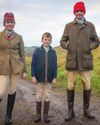
‘Happy hunting, everyone'
“The season for talks, dinners and parties has finally arrived for Tessa Waugh, whose distress about the snags of middle age fades away with some rousing festive spirits
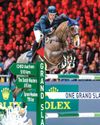
'Monaco deserved this victory
Seemingly destined always to play the bridesmaid’s role, Harrie Smolders’ great partner Monaco finally tops an incidentpacked Rolex grand prix

'It had to end sometime'
The closure of beloved Hampshire saddlery Calcutt Sons is a loss to the hunting and wider equestrian worlds, as Octavia Pollock reports

'You couldn't want for more
The Ludlow's peaceful country makes for a day in \"hunting paradise\"
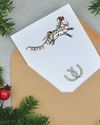
The greatest gift of all
Christmas is fast approaching and while we all like a bit of tinsel, the festive season is also a perfect time for giving to a horse charity. Niki Hinman finds out some of the options

Winter him well
A horse's winter routine can differ dramatically from his summer structure but what’s the knock-on effect? Ellie Hughes asks vets how to optimise routine management for the season
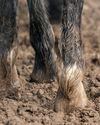
Neat feet
Excellent hoof care is a year-round concern but the winter months present their own problems. Richard Stephenson MRCVS explains the seasonal challenges afoot and how to stay one step ahead
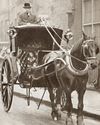
In bygone days
Modern vets have much scientific knowledge behind them, but what about their forebears? Kieran O’Brien MRCVS opens up the world of Victorian vets in London
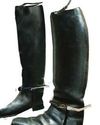
'When I joined the Pony Club it was just two boys and 48 girls'
Pepsi Kohler on being delightfully outnumbered by girls in the Pony Club, a leg-up from a royal and the H&H advert that changed his life